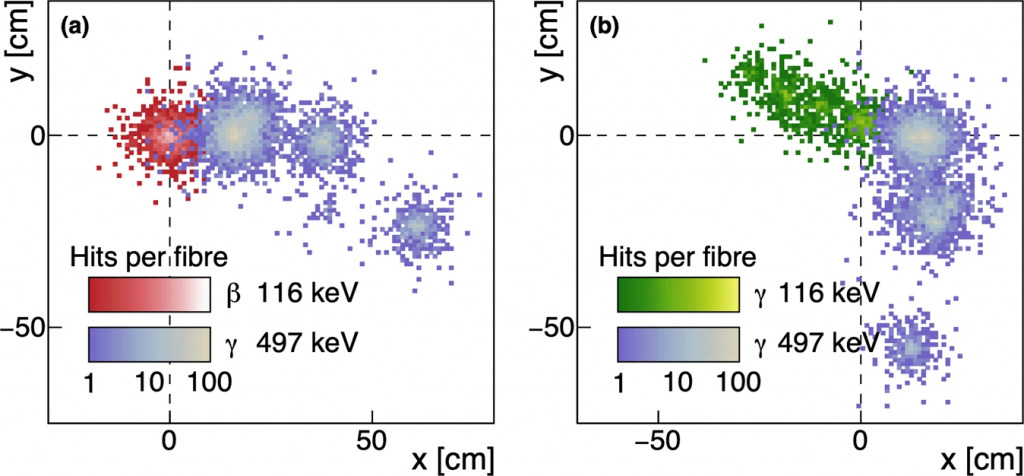The potential of LiquidO to address some specific physics cases has also been studied within the consortium. This has been especially important to guide and prioritise the detector R&D targets and goals.
The main focus has been geared towards direct neutrino detection in the context of several sources: reactor (order few MeV), solar (from 0.1MeV to 10MeV), supernovae (from 1MeV to order 50MeV), and accelerator (from 10MeV to few GeV) neutrinos. The detection of geoneutrino, irreducibly indistinguishable from reactor neutrinos, is actually part of a specific bold effort. An example of unprecedented MeV neutrino interaction detection is illustrated from our Nature’s Communication Physics 4 273 2021.

Special emphasis has been dedicated to challenges of neutrino detection in the MeV regime, including the extreme control of radio-genic and cosmo-genic backgrounds, respectively, generated by natural radioactivity and cosmic muons. This effort has been so fruitful that it has effectively derived into the active exploration of possible LiquidO-based detection specialisation for rare nuclear decays such as the ββ, where the active reduction of all MeV backgrounds is most extreme and success needs major effort ahead.
One very specific case of our studies is LiquidO’s ability to topologically identify the annihilation of positrons (e+; anti-matter partner of the e–) from the order 1MeV. This was motivated by the event-wise identification of anti-electron-neutrinos, commonly obtained from reactors, supernovae and atmospheric neutrinos upon interaction. In fact, this was the original motivation behind LiquidO’s conception. This development has recently accidentally further derived into an important innovation application of LiquidO in medical physics for a possible novel articulation of PET-scanner instruments – under active exploration for demonstration..
Our preliminary studies of the GeV regime detection for accelerator neutrinos have so far focused on LiquidO’s ability to address event topology for interaction-ID (mainly CC/NC for e±, μ±, τ) and its visible energy reconstruction capabilities. These are critical observables for this type of physics. Those studies have also derived preliminary studies of atmospheric neutrinos and proton-decay searches detection, as byproducts. This regime has also allowed some explorations of the use of LiquidO for possible high-energy physics in colliders for calorimetry specialised detection technology.
Some of our studies have already been published or released at conferences and they enjoy a tight and major collaborative effort between experimental and phenomenology scientists.
